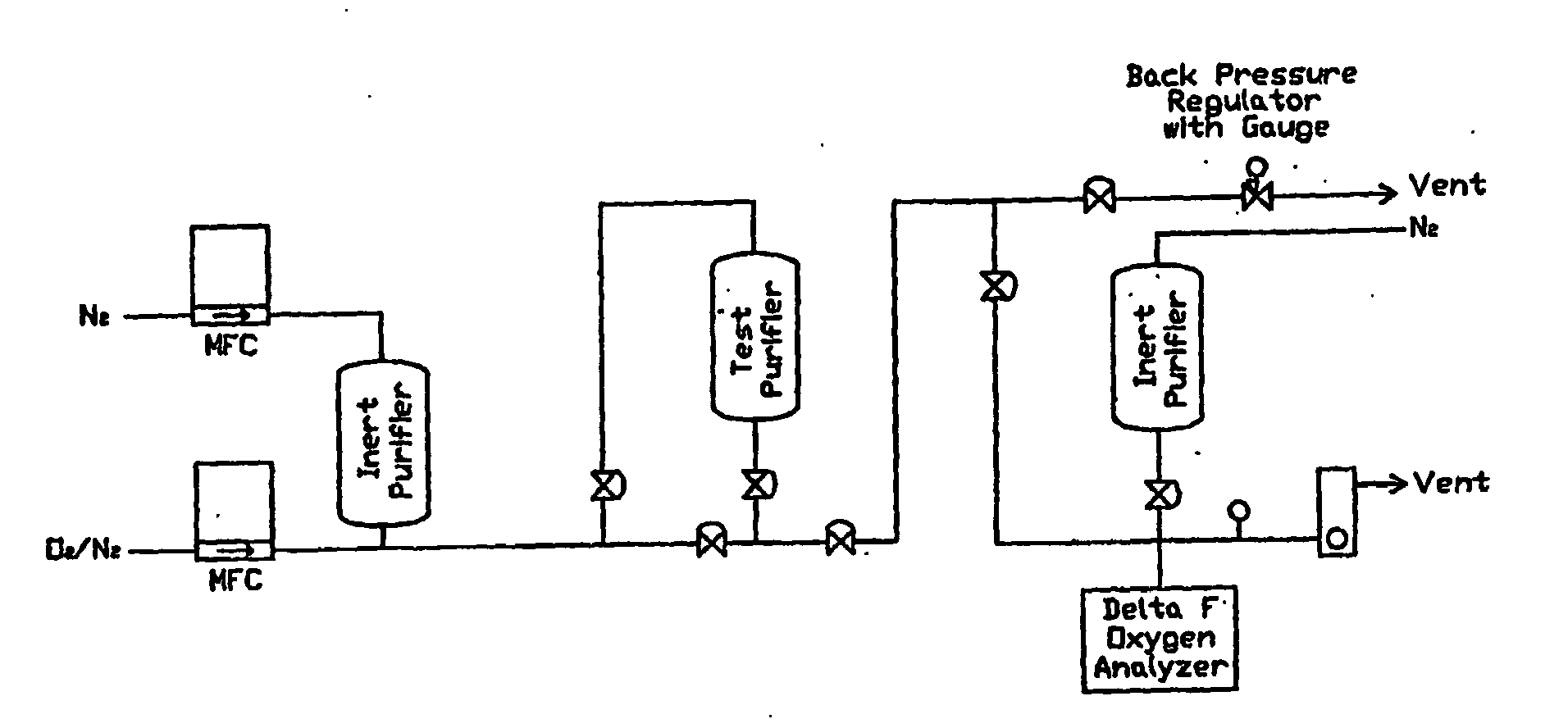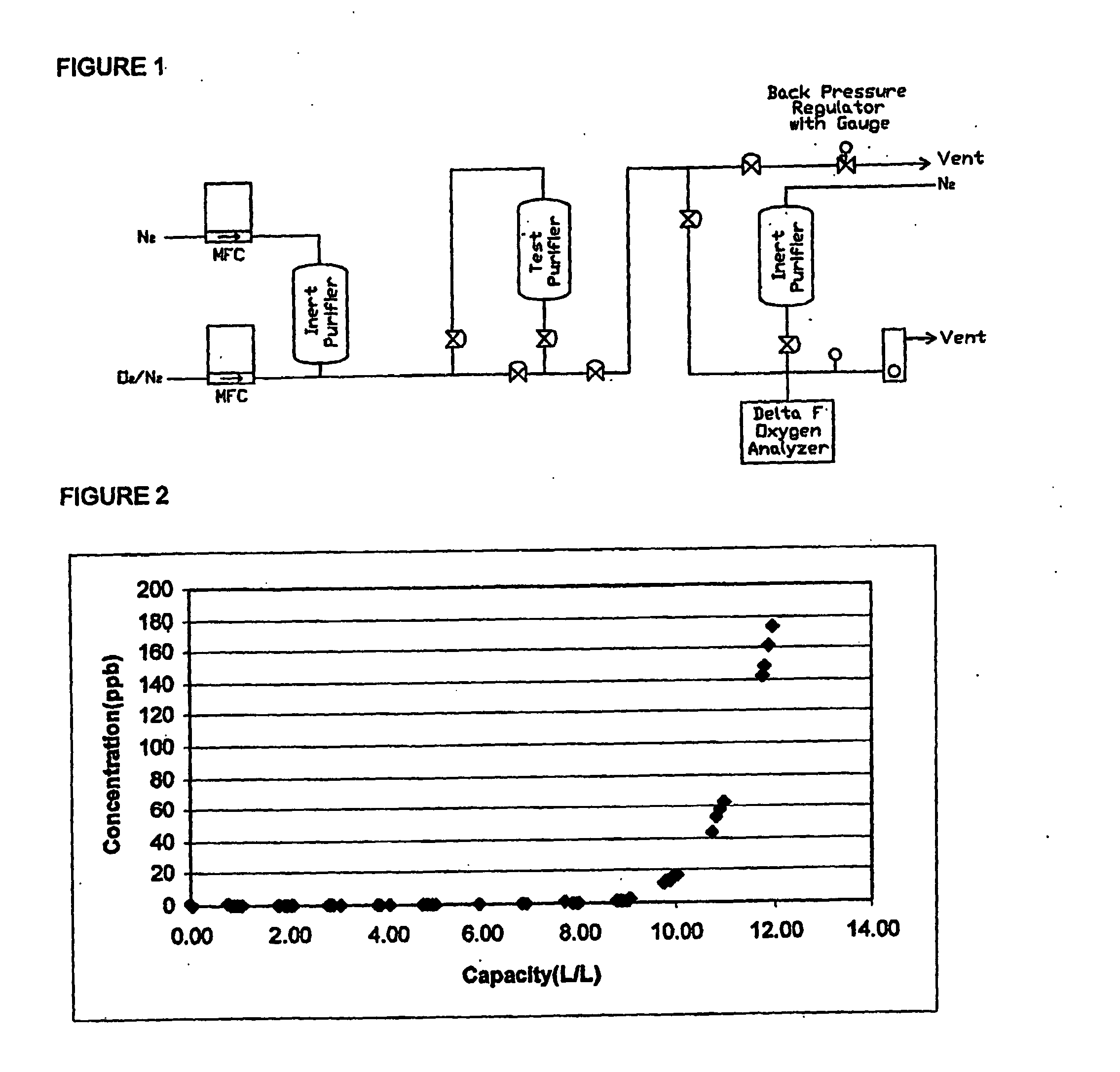Method for purifying carbon dioxide
a carbon dioxide and purification method technology, applied in the field of purification methods, can solve the problems of difficult purification of cosub>2/sub>to a high level, inability to use products, and inability to impregnate wafers and other high-purity substrates, and achieve the effect of reducing adsorbent and sufficient purity
- Summary
- Abstract
- Description
- Claims
- Application Information
AI Technical Summary
Benefits of technology
Problems solved by technology
Method used
Image
Examples
example
[0039] A test purifier was filled with a adsorption media containing a including a pre-oxidized mixture of Ni / NiO, approximately 60% by weight on an a silica support, exposed to air for several days. The purifier was activated for 29 hours at ambient temperature using a 5% H2 / 95% Ar purge gas at 1 standard liter / minute (slm) at 0 pounds / square inch gauge (psig). Afterwards, the purifier was purged with gaseous CO2 purified with an Aeronex SS-500-KF-A-4R purifier. The temperature was monitored to indicate when each media was finished reacting with the CO2.
[0040]FIG. 1 represents the experimental setup. Mass flow controllers (MFCs) were used to maintain the flow rates of the 944 ppm O2 standard and the purified nitrogen (N2) to attain a challenge gas containing 15 ppm of O2. A backpressure regulator was used to vent and maintain the pressure during purging of the test manifold. A Nanotrace Oxygen Analyzer (Delta-F) was used to measure the O2 concentration. The lower detection limit o...
PUM
| Property | Measurement | Unit |
|---|---|---|
| temperature | aaaaa | aaaaa |
| temperature | aaaaa | aaaaa |
| temperature | aaaaa | aaaaa |
Abstract
Description
Claims
Application Information
 Login to View More
Login to View More - R&D
- Intellectual Property
- Life Sciences
- Materials
- Tech Scout
- Unparalleled Data Quality
- Higher Quality Content
- 60% Fewer Hallucinations
Browse by: Latest US Patents, China's latest patents, Technical Efficacy Thesaurus, Application Domain, Technology Topic, Popular Technical Reports.
© 2025 PatSnap. All rights reserved.Legal|Privacy policy|Modern Slavery Act Transparency Statement|Sitemap|About US| Contact US: help@patsnap.com


